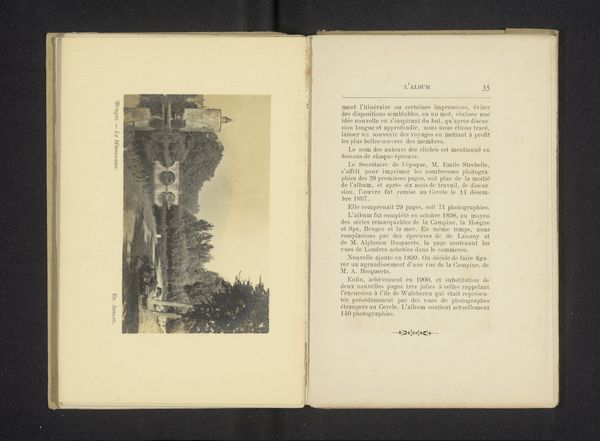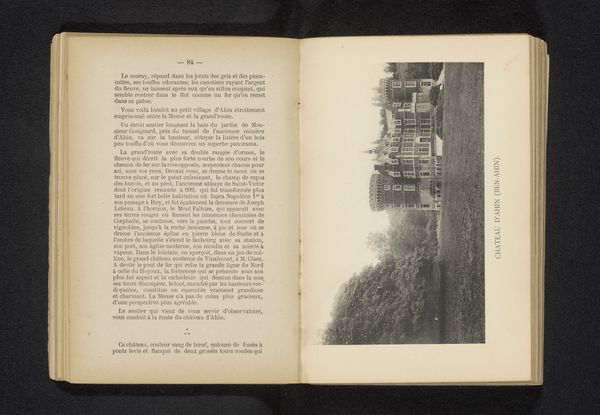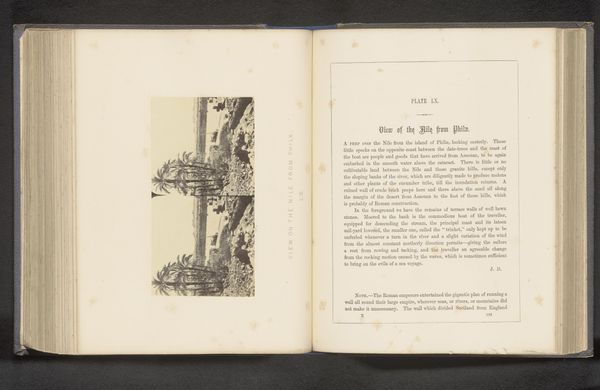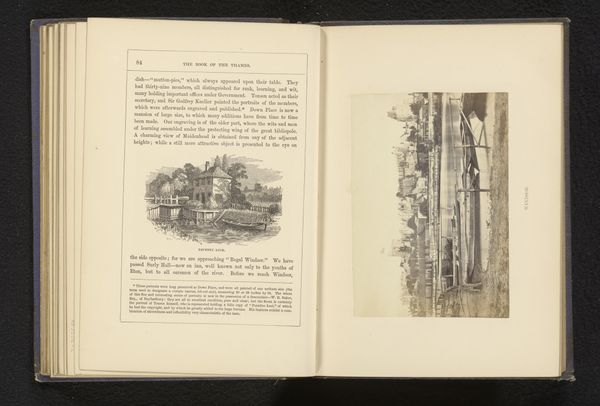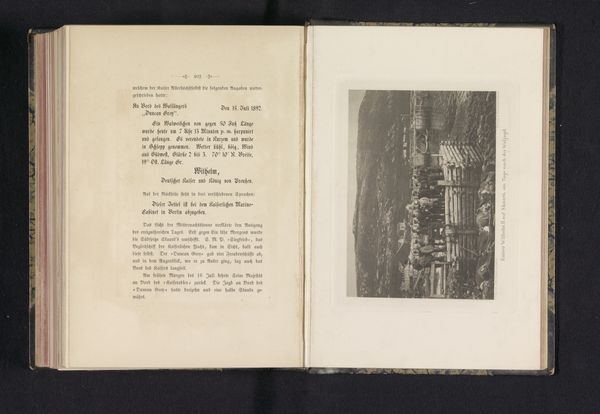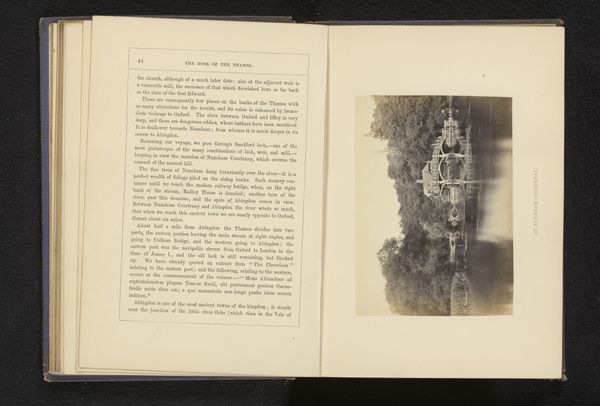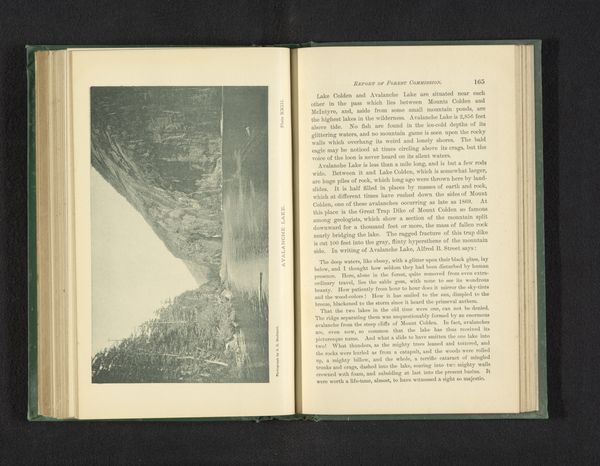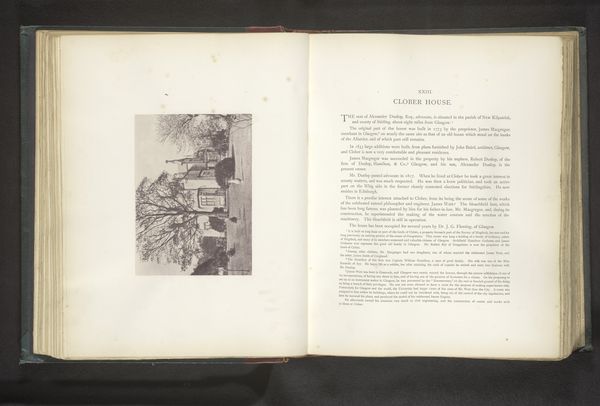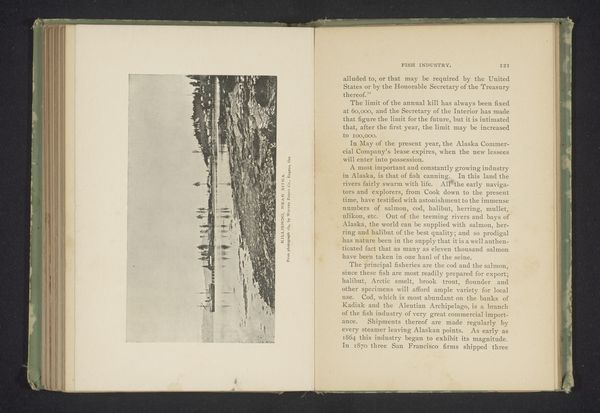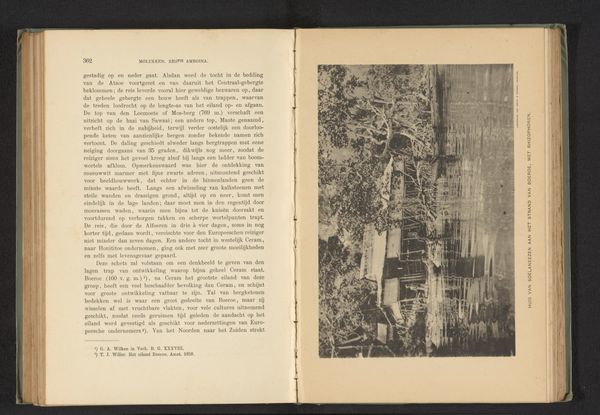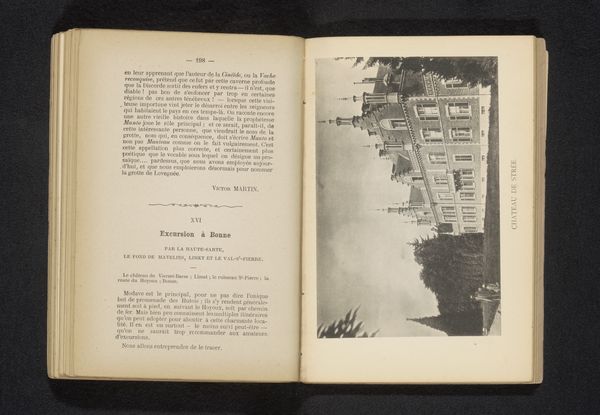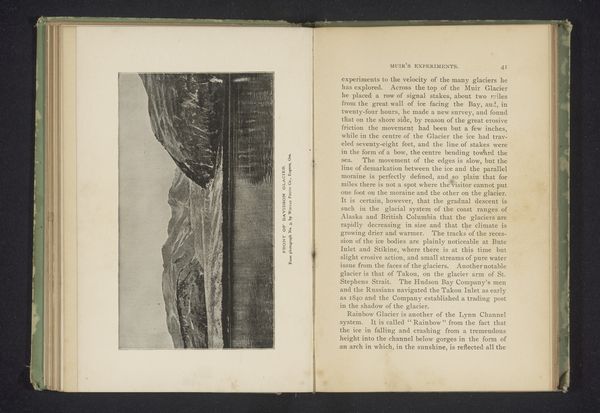
Dimensions: height 100 mm, width 140 mm
Copyright: Rijks Museum: Open Domain
Curator: Here we have a captivating albumen print, a photograph by Francis Frith titled "View Over the Thames, From the Folly Bridge in Oxford," predating 1867. Editor: It’s quite striking—a shimmering, almost dreamlike rendition of the river and the cityscape. The tonal range is beautiful; such soft gradations! There’s a real serenity about it. Curator: Frith was a pioneer in commercial photography. This image, presented within an album, speaks to the growing market for picturesque views of Britain. These weren’t just art objects; they were commodities for a burgeoning middle class eager to experience these landscapes vicariously. Editor: That’s precisely what comes to mind. The photographic print, with its particular albumen process, elevated photography from simple documentation to a marketable piece of art. This would influence later generations of fine art photographers. But what about Frith? Was he just in it for business, or was something more going on? Curator: Both! Frith was a savvy businessman who saw the market, but he was also clearly captivated by the aesthetic potential of the medium. Note the composition—the way the light plays across the water, drawing the eye toward the buildings of Oxford. These pictures reinforced a certain national identity, romanticizing English scenery. Editor: Absolutely, that interplay between industry and artistry is clear. The production process would be considered quite intensive today, influencing not only the aesthetic, but the time commitment for the labor. What does this say about what was valued at the time in the rapidly changing industrialization and mechanization of England? Curator: It reminds us that technological advances, while offering new avenues for artistic expression and economic activity, are always embedded within specific social and economic structures. Editor: It also underscores the important role museums like the Rijksmuseum play, giving viewers space to contemplate the relationship between visual culture, artistic skill, historical narratives, and industrial capacity. It asks questions. Curator: Indeed, it pushes us to think about the intersections of artistic creation, consumer culture, and national identity. Editor: An intersection which brings history to bear even upon today's modern techniques and forms.
Comments
No comments
Be the first to comment and join the conversation on the ultimate creative platform.
